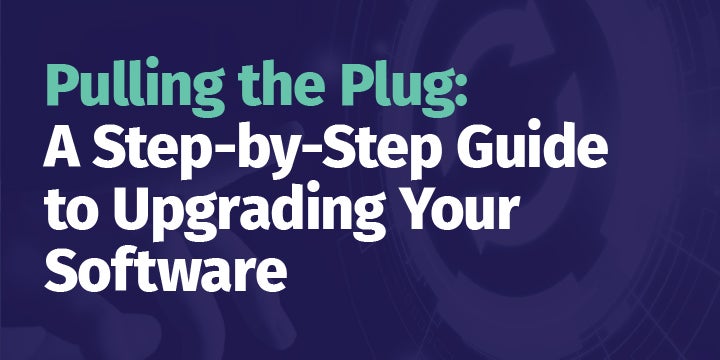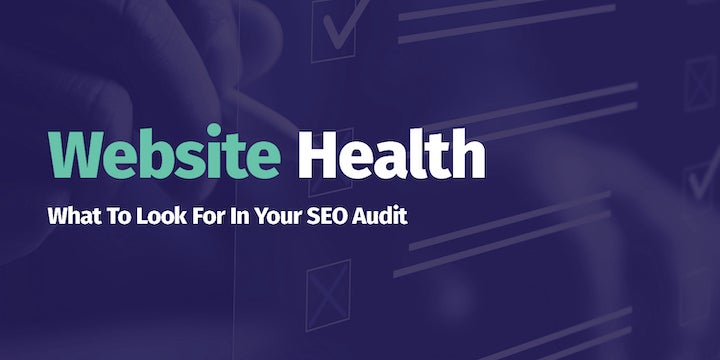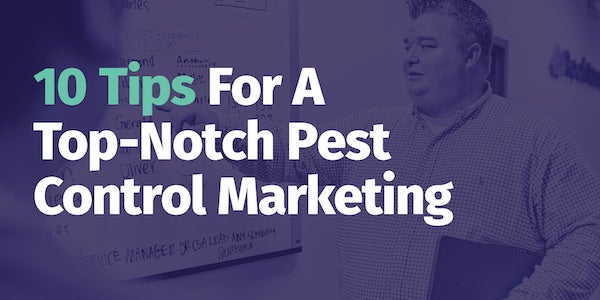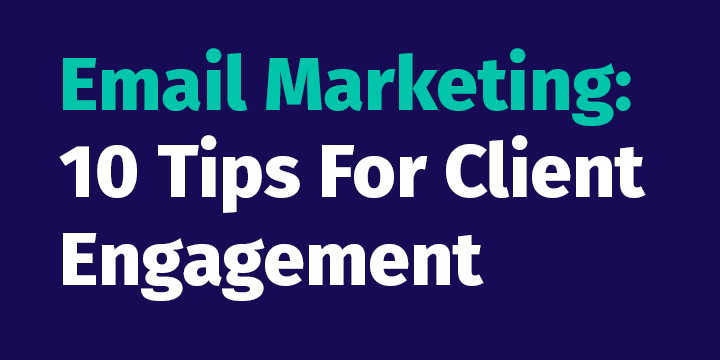Automate Your Way To Commercial Pest Control Success

It’s a well-known fact that for most pest control companies, the commercial facilities they treat are their most important contracts, with single deals often accounting for thousands of dollars in annual revenue. Unlike private residences that generally get treatments scheduled every month, commercial properties often require far more frequent service to maintain compliance, sometimes even every week.
Although they share the same basic goal of creating a pest-free environment, residential and commercial control vary wildly in terms of scope and requirements. Commercial building managers also have to keep comprehensive records of everything that goes on inside them to ensure they stay compliant with government and other regulatory agencies and will also have very specific needs that must be met depending on the function of the facility.
90% of businesses had at least one infestation in the past 5 years through Social Media.*
Luckily, while the idea of taking on a commercial contract can seem overwhelming for many pest control companies, field service software and technology make it easier than ever for companies of all sizes to survive and thrive in the commercial sector.
We’ve identified the three key strategies you can use to leverage software to build and grow a successful commercial pest control business.
Accurate, Accessible Data Through Paperless Trend Reporting
Success in commercial pest control relies on the clients, the pest control company, and the technicians in the field all having access to accurate and reliable data to let them know precisely where their service efforts are going and whether or not those efforts are effective.
While many pest control companies have binders full of information about their commercial clients, finding the exact details you need when you need them can be a time-consuming and challenging process. To accurately diagnose the situation and stay on top of it as conditions change, it’s not enough that the data exists – it has to be easily accessible.
This is where paperless trend reporting comes in. Paperless trend reporting allows on-site technicians to report examples of pest-conducive conditions, pest evidence, and pest activity as they’re found, list the products they used or other steps taken to address the issue, and note who is the responsible party is for fixing any problems they find.
These reports are then immediately accessible by both the pest control company and the property manager so that everyone involved in the treatment process gets a complete view of the status of the facility.
15% of businesses with an infestation lose 1-2 working days.*
Technicians: Real-Time Reporting And Insights For More Effective Treatments
One of the biggest challenges technicians face while undertaking commercial pest control treatment comes from the sheer size of the property that needs to be treated.
Bigger facilities inherently contain more nooks and crannies for pests to hide; without accessible data informing them which areas need special attention, technicians can overlook problems that might be more readily apparent in a residential setting.
One way to overcome this challenge is through the implementation of paperless trend recording. Mobile technology now gives technicians in the field the ability to quickly and easily document any signs of pest activity they see around the property while conducting an inspection that could indicate potential pests throughout the facility.
Even better, technology can be used by the technician to define structures for each facility they service. Technicians get a virtual roadmap of all the locations they need to treat throughout the facility as well as what pest activity or pest-conducive conditions were present in each of these areas.
This data can then be accessed during any future visits to ensure that the biggest problems facing the facility are being accurately addressed. Also, because these trend reports are visible to any technician that’s servicing the facility, a tech visiting the facility for the first time can treat it as effectively as one that’s been maintaining it for years.
Facility Managers: Ensure Compliance And Mitigate Liability
Beyond the size of the property being treated, one of the biggest factors separating residential from commercial pest control is the amount of documentation required. Unlike residential clients, commercial customers require extensive records of everything that was done on the premises – both to justify their investment and to ensure nothing that was done could jeopardize the business. Pest control needs vary from business to business. A restaurant kitchen will have different needs than a warehouse; a supermarket will have different needs than an office break room, and so on.
Unfortunately, this means that for facilities with complex pest control requirements and safety regulations (such as food processing plants), there are equally complex reporting procedures that must be followed if they want to stay compliant with government regulatory agencies. Just keeping up with the required paperwork can become a monumental task, as if staying on top of their unique pest pressures wasn’t tricky enough.
Paperless trend reporting solves this issue by allowing property managers to quickly and easily get a comprehensive list of all the pest control measures taken at their facilities. Commercial customers know precisely what chemicals and baits were used, in what quantities, and where, so whether it’s yearly reporting or a surprise audit, all the information they need to present related to treatment history is just a button press away.
The cost of pest infestations to U.S. businesses in a single year: $13.2 billion in lost revenue and $6.8 billion in increased operating expenses.*
Improve Commercial Customer Retention
In pest control, as in virtually every industry, it’s much more cost effective to retain the customers you already have than to seek out and find new customers. And with so much potential revenue at stake with commercial contracts, the importance of retaining individual customers is magnified considerably
The best way to ensure commercial customers stay with your company and don’t leave for someone else is to provide them the best, most satisfying customer experience possible. In addition to giving customers less incentive to leave, fostering a productive relationship with satisfied customers is also one of the best ways to grow your business organically through positive word-of-mouth.
Meeting The Unique Challenges Of Commercial Customers
With any business-client relationship, the secret to lasting success is to develop a deep understanding of their unique pain points to provide them with a solution that meets their needs better than anyone else can. This is true for pest control in general, but it should always be at the front of your mind when treating commercial properties.
While every business has to make revenue, retain employees, and keep customers coming back, in specific industries the risk for illness, improper sanitation, or toxins being spread to humans through pests is often high.
To ensure this doesn’t happen, the pest control company servicing this client has to take steps to provide complete and lasting pest prevention. This is another area where paperless trend reporting comes into play, ensuring that the worst pest problems the business is dealing with are adequately addressed. And because these paperless trend reports can be sent to the client with the click of a button, they can rest assured that their business is in good hands.
Provide Memorable Customer Experiences
Communication is the foundation of any great customer relationship, so being able to share updates and information about the status of a commercial treatment quickly and efficiently is always a plus.
One of the many benefits of paperless trend reporting is that facility managers will get access to the same information and updates that the office and technicians in the field receive.
Better monitoring of customer conditions gives technicians the ability to handle their needs quickly from the field, while the office addresses any concerns they might have or changes they might want to be made. With real-time monitoring, facility managers gain visibility into their situation and an objective birds-eye view of where they stand and what’s being done to address any problems.
As a bonus, software also makes it easy to assign responsibility for issues found throughout the facility. Unlike residential treatments where the technician is responsible for resolving any pest issues found throughout the home and little else, commercial properties have unique problems like broken doors or leaky faucets that need to be reported to management and assigned to the relevant maintenance team to be resolved.
Mobile trend reporting makes this process easy, allowing technicians to quickly show the services provided, notify the company’s team of any additional issues, and proactively assign responsibility to prevent further damage. Provided with an instant update upon the technician’s job completion, the property manager can waste no time in assigning the appropriate parties to resolve any issues that don’t fall under the technician’s responsibility.
Another key component of creating a great commercial customer experience is the ability to easily onboard and set them up. With easy-to-use commercial pest control software, you can utilize a bulk setup and create hundreds of units in minutes, not hours. Built-in, ready to use structure templates eliminate errors and starts the relationship with a new commercial customer on the right footing.
By adding a branded customer portal to your current pest control software, your commercial customers can automate scheduling services, consider quotes and last services, send billing and service reminders, setup autopay, and create customer agreements defining quotas and units.
Keeping and storing all confidential customer information in the cloud relieves you of the hassle of relying on in-house servers to store highly sensitive customer information without sacrificing security. They’ll also be able to access this data quickly, allowing preparation for yearly audits to be as simple as pressing a button.
Lower Commercial Technician Turnover
Recruitment and technician retention are two of the biggest challenges pest control companies face, and with good reason. Finding great, reliable people can be a challenge regardless of industry, but the recent job surplus has given great employees in the field plenty of opportunities to find work elsewhere if they feel their needs aren’t being met.
Developing a great employee is an investment, so suddenly losing one can make it feel like all of the time and money spent educating and training them has gone to waste. Making matters worse, you’ll also suffer a direct loss to productivity as you try to find a replacement, not to mention the extra time you’ll need to spend on training and educating other employees to make up the difference.
Because commercial pest control contracts are so lucrative, they are often managed by the best, most qualified technicians on your team. These technicians become the face of your company to the property managers they interact with, so losing them can be a huge blow to your commercial efforts.
Unfortunately, with unemployment numbers hitting historic lows and job opportunities growing by the day, a great technician with a strong resume has never had more choices in where to work. If you’re not careful, you could see some of your best techs get pulled away by another company—in the worst-case scenario, by the competition.
Modernize Your Business Operations
One pitfall many pest control businesses fall into is failing to meet the expectations of the next generation of pest control technicians. Adults entering the job market are tech-savvy millennials and use modern technology and mobile apps to run every as act of their lives.
In this regard, modernizing your business’s day-to-day operations could make technicians less likely to switch companies, and more importantly, because you’ve made their job easier, they are more likely to recommend your company to their peers, too.
No one wants to have to lug around binders full of paperwork to and from job sites, so this is another area where going paperless with billing and invoices will come in handy. Switching over to paperless billing and payment plans will also carry the added benefit of allowing technicians to spend less time filling out paperwork and more time getting the job done.
Beyond ditching paper for client interactions, look into ways to limit paper use for internal purposes. For instance, incorporating mobile barcode scanners for bait boxes, termite stations, and other equipment can both save technicians time spent doing paperwork and serve as evidence that they were using the right tool for the job if customers should inquire into their service methods later on.
Increase Technician Job Efficiency
Helping technicians do their jobs faster and more effectively is more than just a way to make more revenue: it’s also an essential part of keeping them satisfied with their jobs. Commercial customers are generally their most time-consuming stops, so helping techs minimize time spent at these facilities without sacrificing effectiveness can go a long way in keeping them happy—not to mention giving them more time to fill in their other stops throughout the day.
Unlike residential treatments which mostly follow the same basic procedures from one home to another, commercial facilities can host a wide array of different challenges and requirements based on both their function and their physical layout. The more the technician knows about the structure before treatment, the better. Many times, this knowledge comes from notes left by other technicians that have serviced the facility in the past.
While traditional service pages often leave some room for notes, this is often not enough to get into detail, which can result in technicians resorting to shorthand that can be difficult to understand for other readers—not to mention the risk of poor handwriting making their notes illegible. One significant step to try is to introduce ways for technicians to leave comprehensive Cloud-accessible notes that they or other technicians can refer back to for future reference.
Allow your best employees to go in-depth with their experiences servicing some of your biggest clients, which serves both as an opportunity for them to feel valued for their insight as well as for them to pass on their valuable knowledge to the others on the team.
Not only will this step help keep other technicians servicing the site in-the-know, but it can also help keep specific details that might be forgotten at the front of the technician’s mind. With in-depth situational and structural data available at their fingertips, your best techs will be able to pinpoint problems and challenges within the unique commercial structure they’re treating much more quickly to address them effectively.
Provide Support For Commercial Technicians
If all else fails and specific relevant data hasn’t already been made available to the field technician, make it as easy as possible for them to get answers and advice from the office. No one likes the feeling of being left out in the dark, and this is especially true while working on big and potentially costly commercial projects.
This is yet another area where mobile apps and paperless trend reporting can come in handy. With the comprehensive data they’ve collected immediately available to the office, they can ask any relevant questions and provide pictures to illustrate exactly where the issue is within the facility and get the best and most relevant advice about how to proceed.
Commercial pest control is a daunting task even for experienced pest control companies. However, with the right technology tools in place, you can ensure that your team is equipped to treat facilities of every shape and size, that your customers are satisfied with your service, and that your best technicians continue to produce results that push your company to the top.
Your Partner In Growth
We hope this guide has been helpful. Whether you’re looking to add efficiencies, make things easier for your employees, improve your customer service, increase sales, or anything in between, FieldRoutes is committed to helping your business reach its full potential. Our business management software and integrated marketing services are built with your customers and employees in mind and can help you achieve the growth you’ve always dreamed about.
Call for a Demo at 972.702.7156
Join the number of thriving businesses using FieldRoutes to acquire new customers, improve automation, and crush the competition.





